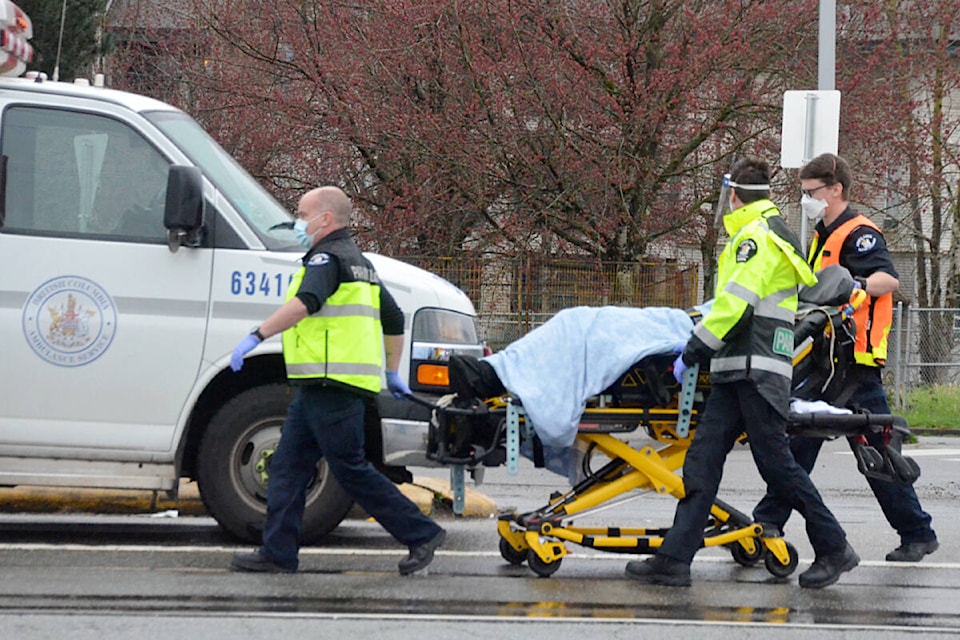Ambulance service in Sooke is becoming increasingly busy, and local politicians are concerned about potential gaps in coverage.
B.C. Emergency Health Services (BCEHS), the organization responsible for running the province’s ambulances, responded to 1,853 events in Sooke in 2021, up from 1,595 in 2020 and 1,503 in 2019.
The increases are partly fuelled by the pandemic, the toxic drug supply crisis, and an aging population – trends seen across the province.
But demand elsewhere in Greater Victoria sometimes sees Sooke’s solo full-time ambulance pulled away to calls in other communities.
Although a full-time crew is stationed in Sooke, BCEHS doesn’t follow municipal boundaries. When an emergency occurs, the closest available paramedic unit responds, meaning the Sooke ambulance can get pulled out of the community.
“We’re always lobbying for better service on many fronts, transit and the ambulance. The transit is an inconvenience, but the ambulance is life and death. With Highway 14 being the way it is now, our ambulance could be stuck out there for hours, and there’s no coverage here,” said Sooke Coun. Al Beddows.
BCEHS said the goal is always to have a crew respond, then return to the station as quickly as possible.
Responses go to the most critically ill and injured patients first, determined by a globally utilized medical priority dispatch system. Patients with life-threatening symptoms including cardiac arrest, chest pain, breathing difficulties, and severe bleeding or unconsciousness are prioritized.
“Our saving grace is that we have a very good fire department, and the fire department is responding when the ambulance can’t,” said Beddows.
Sooke deputy fire chief Matt Barney said assisting with medical aid calls has always taken up most of the fire department’s time. Medical aid calls comprise between 55 and 65 per cent of the calls Sooke fire responds to. The figure that has changed is the number of calls they’re responding to. That increase is fuelled by Sooke’s growing population and isn’t unique to medical calls, said Barney.
Most commonly, ambulance services and fire crews arrive around the same time. In those instances, fire crews assist the paramedics as directed, sometimes by moving a patient from the scene to the ambulance.
Around five to 10 per cent of the time, fire crews arrive before paramedics, and there’s a significant delay – usually between 10 and 20 minutes, said Barney. In those instances, fire crews provide immediate medical care, including stabilizing a patient and CPR if required. Some of the firefighters on Sooke’s staff are also trained as paramedics.
Barney added that the station has on-call staff to help cover if there are multiple calls at once but that most of their calls happen during the daytime when they have a full-time crew working.
BCEHS said there are no significant staffing challenges in Sooke.
Sooke’s staffing was upped last year with eight new positions. There are now 10 permanent, full-time paramedic positions in Sooke who staff an ambulance 24/7.
“Previously, during some hours of the day, this ambulance was staffed by paramedics who were on standby at the station, making minimum wage for the period they were on standby and their full wages while out on calls. The new positions added in the last year will improve recruitment and retention in the community by offering more jobs with full wages and benefits,” a spokesperson for BCEHS said in a statement.
ALSO READ: ‘Nobody should have to wait for an ambulance’ — paramedic union president
bailey.moreton@goldstreamgazette.com
Like us on Facebook and follow us on Twitter.
